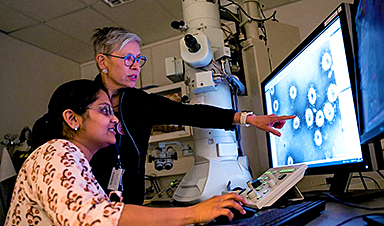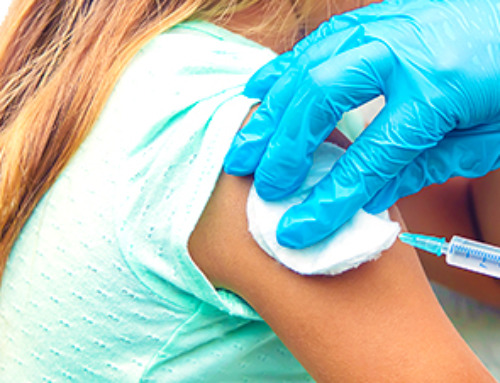Studies at the University of Jyväskylä in Finland show that resin-treated plastics can quickly deactivate viruses, part of a larger effort under the BIOPROT project to develop bio-based antiviral materials for protective gear.
Viruses can remain active on solid surfaces for extended periods, potentially raising the risk of infection. Professor Varpu Marjomäki, a Cell and Molecular Biology expert at the University of Jyväskylä, and her research team are exploring how various surfaces and materials can help reduce the transmission of viral diseases. Specifically, they are examining the survival duration of coronaviruses on different surfaces under varying conditions of humidity and temperature.
"This information would be of direct benefit to both consumers and industry. Antiviral functionality could be used, for example, in restaurants, kindergartens, public transport, and stores, on different surfaces, where viruses can potentially stay infective for a long time and spread easily," says Professor Varpu Marjomäki from the University of Jyväskylä.
Plastic Surfaces With Antiviral Functionality
The researchers of the Nanoscience Center of the University of Jyväskylä studied resin-embedded plastic surfaces against both the seasonal human coronavirus and the SARS-CoV-2 virus.
"In our recent study, we found that the viruses stayed infective for more than two days on plastic surfaces that were not treated at all. In contrast, a plastic surface containing resin showed good antiviral activity within fifteen minutes of contact and excellent efficacy after thirty minutes. Plastic treated with resin is therefore a promising candidate for an antiviral surface," says Marjomäki.
Research Cooperation Project With Premix Oy
The research is part of the BIOPROT project (Development of bio-based and antimicrobial materials and use as protective equipment) funded by Business Finland and has been done in collaboration with the Finnish company Premix Oy.
"The project aims to study existing and develop new antiviral solutions in cooperation with companies such as Premix Oy. This will help to create new products for future pandemics and epidemics," says Marjomäki.
New Bio-Based and Antimicrobial Materials in Protective Equipment
The BIOPROT project involves a total of six universities and research institutes and several companies. The project is coordinated by LUT University and aims to develop new, sustainable and safe material solutions that will be used in the fight against infections, with a particular focus on respiratory and surgical mouth masks and reusable masks for industrial use. It is also hoped that the project will improve the self-sufficiency of products and materials in Europe. At the University of Jyväskylä, under the supervision of Marjomäki, the project is developing bio-based antiviral materials.
"Effective and nature-derived antivirals are available in Finland and could be used for the functionalization of masks and surfaces. Presently, there are only few bio-based functional solutions available, so we have an opportunity to be pioneers in this field," says Marjomäki.
Reference: "Antiviral action of a functionalized plastic surface against human coronaviruses" by Sailee Shroff, Marjo Haapakoski, Kosti Tapio, Mira Laajala, Miika Leppänen, Zlatka Plavec, Antti Haapala, Sarah J. Butcher, Janne A. Ihalainen, J. Jussi Toppari and Varpu Marjomäki, 16 January 2024, Microbiology Spectrum.
DOI: 10.1128/spectrum.03008-23
News
Lower doses of immunotherapy for skin cancer give better results, study suggests
According to a new study, lower doses of approved immunotherapy for malignant melanoma can give better results against tumors, while reducing side effects. This is reported by researchers at Karolinska Institutet in the Journal of the National [...]
Researchers highlight five pathways through which microplastics can harm the brain
Microplastics could be fueling neurodegenerative diseases like Alzheimer's and Parkinson's, with a new study highlighting five ways microplastics can trigger inflammation and damage in the brain. More than 57 million people live with dementia, [...]
Tiny Metal Nanodots Obliterate Cancer Cells While Largely Sparing Healthy Tissue
Scientists have developed tiny metal-oxide particles that push cancer cells past their stress limits while sparing healthy tissue. An international team led by RMIT University has developed tiny particles called nanodots, crafted from a metallic compound, [...]
Gold Nanoclusters Could Supercharge Quantum Computers
Researchers found that gold “super atoms” can behave like the atoms in top-tier quantum systems—only far easier to scale. These tiny clusters can be customized at the molecular level, offering a powerful, tunable foundation [...]
A single shot of HPV vaccine may be enough to fight cervical cancer, study finds
WASHINGTON -- A single HPV vaccination appears just as effective as two doses at preventing the viral infection that causes cervical cancer, researchers reported Wednesday. HPV, or human papillomavirus, is very common and spread [...]
New technique overcomes technological barrier in 3D brain imaging
Scientists at the Swiss Light Source SLS have succeeded in mapping a piece of brain tissue in 3D at unprecedented resolution using X-rays, non-destructively. The breakthrough overcomes a long-standing technological barrier that had limited [...]
Scientists Uncover Hidden Blood Pattern in Long COVID
Researchers found persistent microclot and NET structures in Long COVID blood that may explain long-lasting symptoms. Researchers examining Long COVID have identified a structural connection between circulating microclots and neutrophil extracellular traps (NETs). The [...]
This Cellular Trick Helps Cancer Spread, but Could Also Stop It
Groups of normal cbiells can sense far into their surroundings, helping explain cancer cell migration. Understanding this ability could lead to new ways to limit tumor spread. The tale of the princess and the [...]
New mRNA therapy targets drug-resistant pneumonia
Bacteria that multiply on surfaces are a major headache in health care when they gain a foothold on, for example, implants or in catheters. Researchers at Chalmers University of Technology in Sweden have found [...]
Current Heart Health Guidelines Are Failing To Catch a Deadly Genetic Killer
New research reveals that standard screening misses most people with a common inherited cholesterol disorder. A Mayo Clinic study reports that current genetic screening guidelines overlook most people who have familial hypercholesterolemia, an inherited disorder that [...]
Scientists Identify the Evolutionary “Purpose” of Consciousness
Summary: Researchers at Ruhr University Bochum explore why consciousness evolved and why different species developed it in distinct ways. By comparing humans with birds, they show that complex awareness may arise through different neural architectures yet [...]
Novel mRNA therapy curbs antibiotic-resistant infections in preclinical lung models
Researchers at the Icahn School of Medicine at Mount Sinai and collaborators have reported early success with a novel mRNA-based therapy designed to combat antibiotic-resistant bacteria. The findings, published in Nature Biotechnology, show that in [...]
New skin-permeable polymer delivers insulin without needles
A breakthrough zwitterionic polymer slips through the skin’s toughest barriers, carrying insulin deep into tissue and normalizing blood sugar, offering patients a painless alternative to daily injections. A recent study published in the journal Nature examines [...]
Multifunctional Nanogels: A Breakthrough in Antibacterial Strategies
Antibiotic resistance is a growing concern - from human health to crop survival. A new study successfully uses nanogels to target and almost entirely inhibit the bacteria P. Aeruginosa. Recently published in Angewandte Chemie, the study [...]
Nanoflowers rejuvenate old and damaged human cells by replacing their mitochondria
Biomedical researchers at Texas A&M University may have discovered a way to stop or even reverse the decline of cellular energy production—a finding that could have revolutionary effects across medicine. Dr. Akhilesh K. Gaharwar [...]
The Stunning New Push to Protect the Invisible 99% of Life
Scientists worldwide have joined forces to build the first-ever roadmap for conserving Earth’s vast invisible majority—microbes. Their new IUCN Specialist Group reframes conservation by elevating microbial life to the same urgency as plants and [...]





















